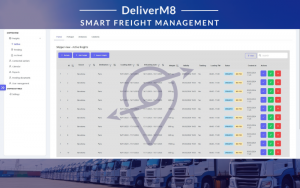Research on artificial intelligence (AI) began with the desire to understand whether and to what extent computers can solve problems in a way similar to the human mind. Many of the early works related to AI focused on creating mathematical models and algorithms capable of performing tasks requiring intelligence, such as reasoning, learning, perception, or using language.
The development of large language models is currently one of the key topics in the field of new technologies, which is why we encourage you to read further parts of this article, which include comments from the CEO of Inero Software, Andrzej Chybicki, on the evolution of this issue over the past years.
Natural Language Processing. A New Approach to Data Analysis
Techniques for processing speech, text, and images have been used in industry and science for many years. They formed the basis of products based on so-called NLP (Natural Language Processing) models. These are algorithms that could understand individual words, later map relationships between words, and combine them into sequences. They began to understand and distinguish the meaning of the same words in different sequences (in other words, they distinguished context) in order to ultimately be able to interpret the meaning of entire sentences. To say that NLP models “understand” language is somewhat of an exaggeration; nevertheless, current NLP language models are able to assign individual sentences to so-called intents (intentions), i.e., distinguish their meaning. Then, by creating appropriate software, we are able to handle simple conversations, dialogues, or respond to simple questions – this is how chatbots have worked until now.
To illustrate this number, we might compare it to reading a several-hundred-page book in a few seconds.
Words Grow in Power: Large Language Models
LLMs, or Large Language Models, which have been developed over the past few years, represent a technological breakthrough because they no longer function merely as classifiers of user intent, but by using trained sets of input and output similarities, they are able to find connections between longer sequences of words (tokens). Large language models are now capable not only of analyzing individual sentences but also significantly longer texts. This is referred to as the length of context (or context window), which currently can be as much as 128,000 tokens. To illustrate this number, we might compare it to reading a several-hundred-page book in a few seconds.
Level of Understanding: Logic in Many Ways Similar to Human Logic
Students sometimes ask, “do computers understand text?” The answer to this question is difficult, if we do not define what we mean by “understanding”. Creators of language models and researchers deal with creating various measures, criteria to be able to evaluate whether a model “understands” a given problem. Nevertheless, in the simplest approach, we can say that a model understands a given issue if the responses (sequences of words), which it generates, are consistent with how a human expert in the field would respond.
I believe that in the context of AI technology development, the difference between how humans communicate (speech, writing) and computers (protocols, databases) is gradually blurring. It seems that in the near future, AI models will support humans in an increasing number of everyday tasks. They will be able to automatically retrieve information to send a response to a customer, suggest to employees the answers to questions, or handle communication through messengers.
Models will be able to browse a whole range of information, including documents and instructions covering, for example, orders, emails, contracts, or invoices, then infer based on them, and subsequently provide the employee with ready data needed for a report, an offer, or other operational actions.
Virtual Assistants: Will Employees Gain Real Help?
Much indicates that AI assistance in work is the future for many areas, yet I still see a big problem. Despite the fact that digitization, mainly during the pandemic, has accelerated rapidly, many companies and institutions still process a large part of information in an unstructured form, i.e., in the form of documents, contracts, instructions, and email messages. The amount of information that employees deal with daily is enormous.
Ultimately, models will be able to browse a whole range of information, including documents and instructions covering, for example, orders, emails, contracts, or invoices, then infer based on them, and subsequently provide the employee with ready data needed for a report, an offer, or other operational actions. Furthermore, a potential area of application will also include validation and checking of documents, analysis of dependencies between two different documents, or several sources of knowledge.
Virtual Assistant Speeds Up Daily Work
An example might be a situation where a bank employee receives a credit application along with attachments such as account status confirmation, employment confirmation, tax statement, and others. Currently, employees often have to manually check whether the data contained in such documents are consistent, e.g., whether the number given in the credit application matches the one on the employment certificate. Whether the bank account number written in the application is correct, and whether the dates of the issued income certificate are current, among many other things. Similarly, in the insurance sector, where issuing a policy requires manually checking VIN numbers on documents, registration certificates, and comparing them with data about inspections, policies, etc.
Implementing tools based on the LLM model into organizations can bring measurable benefits in the form of automation and increasing work efficiency. It is a mistake to claim that software can replace an employee. It can help them. Analyzing the European market, we see demographic trends resulting from an aging society and the decreasing availability of skilled workers.
In summary. Natural Language Processing (NLP/LLM) models increasingly support people in everyday tasks through automating responses to customer inquiries, assisting employees, and managing communication through platforms. These technologies not only increase work efficiency through the automation of routine tasks but also enable advanced operations like document analysis or data integration, which translates into broad applications across various industries and professional levels.

Andrzej Chybicki, PhD Eng.
CEO, Inero Software Sp. z o. o.
andy@inero-software.com






